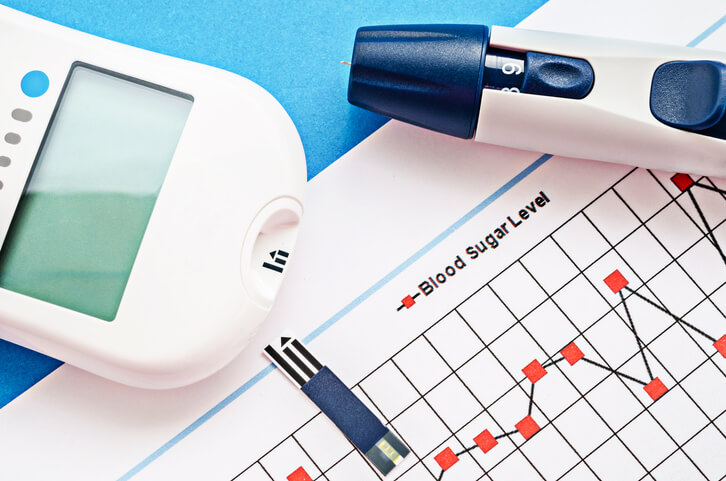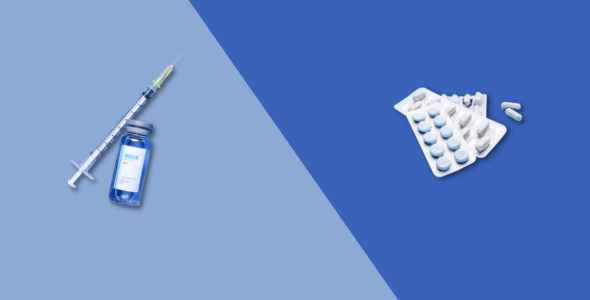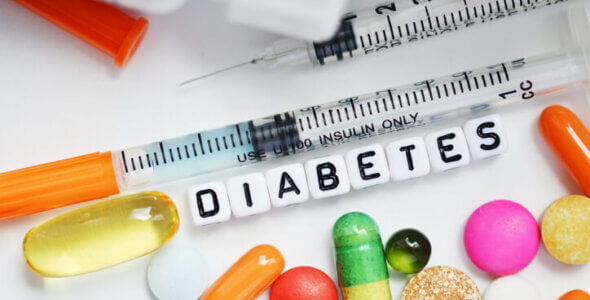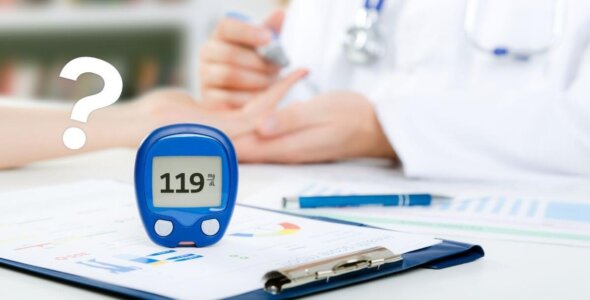What are normal blood glucose levels?
Table of contents
Normal blood glucose levels for adults without diabetes are 90 to 110 mg/dL. Learn more about the symptoms of low and high blood sugar.
The goal of diabetes treatment is to keep your blood sugar level (also called blood glucose level) in your bloodstream as close as possible to normal. The closer you get to reaching this, the better you will feel, especially in the long term. Blood sugar tests will allow you to check that you are in your target range and your diabetes educator to know how well your diabetes care is managed. In time, as you check your levels, you will get to know which foods increase your blood sugar levels and how your medication and exercise affect your levels day to day. Keeping a log of your symptoms, the food you have eaten, activity, and stress levels will help manage your blood sugar levels. Other medical conditions you may have will also influence your blood sugar control. This information is valuable as it lets you know what works for you and what changes your healthcare provider needs to make to your treatment plan.
What are normal blood sugar levels?
The blood glucose level is the amount of glucose in the blood. According to the American Diabetes Association (ADA), the normal blood sugar levels for a person without diabetes are:
- Fasting blood sugar level – under 100mg/dL (in the morning before eating)
- 1 hour after eating 90-130mg/dL
- 2 hours after eating 90-110mg/dL
- 5 or more hours after eating 70-90mg/dL
Blood sugar level charts for people with diabetes
The American Diabetes Association suggests the following targets for most non-pregnant adults with diabetes:
Target blood sugar levels for pre-diabetics and diabetic adults
| Type of patient (adult) | Fasting | A1c (measured over a 3-month period) | Oral glucose test (2 hour) |
|---|---|---|---|
| Prediabetes | 100mg/dL - 125mg/dL | 5.7%-6.4% | 140mg-199mg/dL |
| Diabetes | 126mg/dL or higher | 6.5% or higher | 200mg/dL |
Children, teens, and adolescents with diabetes should aim to keep within these ranges:
Adolescent blood sugar level chart
| Age | Fasting | Before meal | Before exercise | Bedtime | A1c (measured over 3-month period) |
|---|---|---|---|---|---|
| 6-12 years old | 8-180mg/dL | 90-180mg/dL | at least 150mg/dL | 100-180mg/dL | 8.0% |
| 13-19 years old | 70-150mg/dL | 90-130mg/dL | at least 150mg/dL | 90-150mg/dL | 7.5% |
The A1c or HbA1c (the glucose-hemoglobin part of the red blood cell) test looks at how good your blood glucose control has been over a period of 3 months. These values are a guide. Your doctor will provide you with a personal management plan to determine your normal range.
Symptoms of low blood sugar levels
Low blood sugar is also as known as hypoglycemia or a hypoglycemic episode. Severe hypoglycemia is dangerous and needs to be treated right away. The brain works entirely on glucose for normal functioning. If levels drop too low, it starts to work less well.
Some symptoms of hypoglycemia:
- Sweating, or cold and clammy
- Dizziness
- Blurred vision
- Shakiness
- Drowsy
- Confusion
- Irritable, upset, or angry
- Tingling lips
- Lightheadedness
- Fast heart rate
- Hunger
These symptoms cause you to lose the ability to think clearly and you may appear to be behaving oddly. The low blood sugar symptoms you get and how severe they are will vary from person to person. Recurrent episodes of hypoglycemia can lead to hypoglycemic unawareness, or the decreased ability to recognize the signs of hypoglycemia. If you have hypoglycemia unawareness or have low blood glucose often, a continuous glucose monitor (CGM) may be a good option.
What causes low blood sugar?
Low blood sugar episodes can be caused by many different reasons:
- Irregular eating habits – eating later than you expected or planned or skipping meals
- Drinking alcohol – alcohol can block your liver’s ability to release glucose
- Exercise – we hope you do exercise! Keep in mind exercise lowers blood sugar levels. Insulin dose or food intake adjustments are needed to match your physical activity
- Medication side effects – diabetes medicines such as insulin and sulfonylureas carry a much higher risk of low blood sugar than all the others. The antimalarial drug Qualaquin (quinine) is another example
- Other medical conditions – such as problems with your hormone levels, pancreas, liver, kidneys, adrenal glands, or heart can cause low blood sugar levels
What to do if your blood sugar gets too low
If your blood sugar level drops lower than 70 mg/dL, do one of the following; chew 4 glucose tablets, drink 4 ounces of fruit juice or regular soda (not diet), or chew 4 pieces of hard candy. Wait 15 minutes after taking one of these treatments. Measure your blood sugar again. Repeat the process until your blood sugar level reaches 70 mg/dL or above, then eat a snack if your next meal is 1 hour or more away.
You must remember that wherever you are, you always carry a readily available carbohydrate such as hard candy or glucose gel. This is most important if you are a driver or exercise regularly. Injectable glucagon is the best way to treat severe low blood sugar. A glucagon kit containing a glucagon injection is available by prescription. Let family members and co-workers know where you keep the glucagon kit and make sure they’ve been trained in how to use it.
Symptoms of high blood sugar levels
High blood sugar is also known as hyperglycemia. Generally, there are two reasons for this happening. Either the body does not have enough insulin or it cannot use insulin properly. The following symptoms occur:
- Headaches
- Blurred vision
- Excessive thirst
- Dry mouth
- Frequent urination
- Tiredness
- Weight loss
- Fruity smell to your breath
- Thrush and bladder infections
High sugar levels slowly erode the ability of cells in your pancreas to make insulin. Frequent and prolonged high blood sugar levels can lead to diabetic ketoacidosis (DKA). As the name suggests, your blood becomes acidic due to the presence of high levels of ketones. The smell of acetone on the breath is one of the classic ways your doctor can make a diagnosis.
Symptoms of ketoacidosis:
- Extreme tiredness and drowsiness
- Nausea and vomiting
- Weakness
- Rapid breathing
- Confusion
Diabetic ketoacidosis is a medical emergency that needs to be treated immediately.
What causes high blood sugar?
High blood sugar can happen for many different reasons, including being unwell, eating more than planned, not producing enough insulin in your body, unplanned physical activity, and stress. Untreated hyperglycemia can lead to serious health problems.
What to do if your blood sugar gets too high?
Check your blood sugar level. Is it above 180mg/dL or your own individual target level? If the answer is yes, drink a large glass of water and take a brisk walk. Serious complications can happen if your blood levels are high e.g. more than 3 times in 2 weeks. Always inform your healthcare team of high sugar levels.
Monitoring your blood sugar levels
As a diabetic, monitoring your blood sugar level is unquestionably the best way to know what is going on inside you. Keeping your blood glucose under tight control undoubtedly reduces the chance of developing complications. Using a blood glucose meter for glucose monitoring is an essential tool in your diabetes management. How often you check your blood sugar depends on the type of diabetes you have.
Individual blood glucose test strips are great for knowing immediately how your diabetes is controlled. It is equally important to know how you are doing over weeks and months. The A1c test gives us this information as it looks at how good your blood glucose control has been over a period of 3 months. An A1c value of 7% is the general goal for diabetic adults but can differ depending on age and other factors. If treatment is working this A1c test should show improvement.
The A1c test is a great test for a diabetic woman who wants to get pregnant. You can find out if your blood glucose has been well controlled before conceiving. If it has not, you can wait until you have good control. In this way, you reduce the possibilities of complications with your baby.
When to check your blood sugar levels
Type 1 diabetes, adult: Check at least twice daily, up to 10 times a day. You should perform tests before breakfast, at fasting, before meals, sometimes 2 hours after meals, before and after physical activity, and at bedtime.
Type 1 diabetes, child: Check at least four times daily. You should perform tests before meals and at bedtime. Tests may also be required 1–2 hours after meals, before and after exercise, and overnight.
Type 2 diabetes, people using insulin or other management medications: The recommended frequency of testing varies depending on insulin dosage and the use of any additional medications.
Managing your blood sugar
- Dietary changes
- Increase exercise
- Keep a healthy weight
- Drink alcohol moderately
- Keep a logbook of blood sugar readings
- Take your diabetes medication regularly
- Becoming totally aware of your own symptoms for low/high blood glucose
Blood sugar levels FAQs
How to reduce blood sugar levels immediately?
If it is an emergency and you need to reduce blood sugar levels immediately, use insulin. An extra dose of insulin can be taken if you have either type 1 or type 2 diabetes. The amount depends on the situation and your doctor’s recommendation. It is important you know when to seek medical attention in an emergency.
What is the average blood sugar level?
Average blood sugar levels differ based on age, how long you have had diabetes, current medication, and other medical illnesses. Your healthcare team will take these into consideration to work out your ideal levels.
Which medications are commonly used to lower blood sugar levels?
Some of the most popular diabetes medications that are used to lower blood sugar levels include:
What medications can raise blood sugar levels?
Many types of medications and some OTC (over-the-counter) medications raise blood sugar levels, but this does not mean they can not be taken if they are needed. You must work with your doctor on the correct way to use them. Some prescription medicines that increase blood sugar levels are steroids, birth control pills, statins, drugs that treat mental health issues, medication for acne, and high doses of asthma medicines. Some OTC medicines that increase blood sugar levels include decongestants, cough syrups, and supplements.
Common medications that cause an increase in blood sugar levels are:
- Beta-blockers e.g. atenolol
- Diuretics
- Corticosteroids e.g. prednisone for rheumatoid arthritis treatment
- Over the counter supplements e.g. niacin
- Antidepressants e.g. selective serotonin reuptake inhibitor drugs like citalopram
Can stress cause high blood sugar levels in non-diabetics?
When you are stressed the hormone cortisol is released. Cortisol blocks the effects of insulin in your body. This means sugar is not moved from the blood into the cells and can cause high blood sugar levels in non-diabetics. If cortisol is released too often or its effects last too long it raises insulin levels and can result in insulin resistance and type 2 diabetes.
How to reduce blood sugar levels during pregnancy?
Maintaining blood glucose levels for pregnant women can be tricky. The goal is to keep blood glucose levels stable whether you have diabetes before pregnancy or have gestational diabetes as a result of pregnancy. You need to watch your blood sugar levels more closely during pregnancy because if your levels get too high they can affect your baby. You will be given a blood glucose monitor.
A screening test for gestational diabetes is usually done in the second trimester between 24 and 28 weeks of pregnancy. If your levels get too low you will experience lightheadedness, confusion, and fainting. This is why it is so important for you to be in the best possible shape before you even try to conceive.
The five main ways to reduce your blood sugar levels during pregnancy are:
- Eat a balanced diet with healthy food, more non-starchy vegetables, and whole grains like brown rice
- Regular exercise (moderate)
- Keep your weight down – obesity (body mass index (BMI) > 24) increases your risk of gestational diabetes
- Test your blood glucose levels regularly
- Take your medication e.g. insulin injections
High risk factors, such as high blood pressure, a history of polycystic ovary syndrome (PCOS) or heart disease, and race have to be taken into consideration (Hispanic and Pacific Islander women are at increased risk) You also need to work more closely with your doctor during this time to have a healthy pregnancy and to protect your baby’s health from birth defects. Checkups and follow up appointments are important to attend.
What is pre-diabetes?
Prediabetes is when your blood sugar is high, but the blood test results are not high enough to be classified as diabetes. An oral glucose tolerance test is used to diagnose prediabetes with a blood sample.
Your healthcare professional will discuss your risk factors of diabetes such as your family history, other health conditions, and your current lifestyle. After gathering all this information advice will be given on how to bring your blood sugar levels into a healthy range.
Lifestyle changes including eating a healthy diet and knowledge of low GI foods are very important when you have been diagnosed as borderline diabetic. A dietitian can put together a pre-diabetes diet and meal plan with you looking at:
- Calorie intake
- Low carb intake
- Low glycemic index foods (GI foods) e.g. lentils
- Low-fat alternatives
- Healthy fats e.g. olive oil
- Omega-3 fatty acids e.g. salmon
Read our blog on Top 20 best snacks for diabetics for ideas on healthy choices.
Your care team will also discuss ways to increase your physical activity, and how to keep your cholesterol and blood pressure under control to reduce your risk of diabetes. Metformin is often recommended for individuals with prediabetes if healthy eating and lifestyle changes are not enough.
What are the complications of high blood sugar levels?
Diabetes complications can occur if your diabetes is not treated correctly, issues it can cause are:
- Heart disease leading to a heart attack
- Kidney disease
- Vision loss e.g. cataracts, glaucoma
- Foot and skin problems e.g. dry skin, loss of elasticity of the skin, or ulcers on the feet
- Blood vessel damage
- Nerve damage
Some complications of diabetes can lead to life-threatening problems if they are not picked up and treated on time. Read our blog on the complications of diabetes for more detailed information.
Which foods raise blood sugar levels?
There are several foods that a person with diabetes should either avoid or eat only in moderation.
The following can cause blood sugar spikes:
- Sugary drinks, such as soda, juices, and sports drinks
- Food made from refined grains e.g. white rice, white bread, white pasta, crackers
- Foods containing trans fats e.g. margarine, peanut butter, spreads, creamers, and frozen dinners
- Food with added sugar e.g. yogurts, breakfast cereals, dried fruit
- Honey and maple syrup
- Flavored, sugary coffee drinks
- French fries
Read our blog on what foods to avoid with diabetes for more information.
Medically reviewed
A medical professional has reviewed this article.


Jamie Winn, PharmD
Jamie Winn, PharmD
Dr. Jamie Winn received his Doctor of Pharmacy in 2002 from the University of South Carolina College of Pharmacy, Columbia, SC. Jamie is a medical reviewer for NiceRx.







